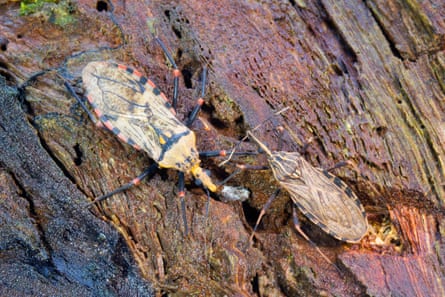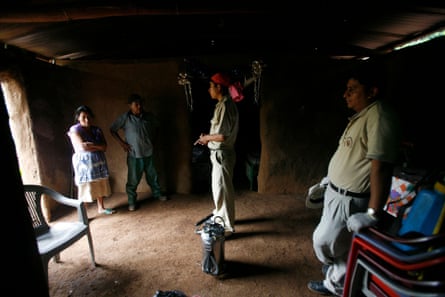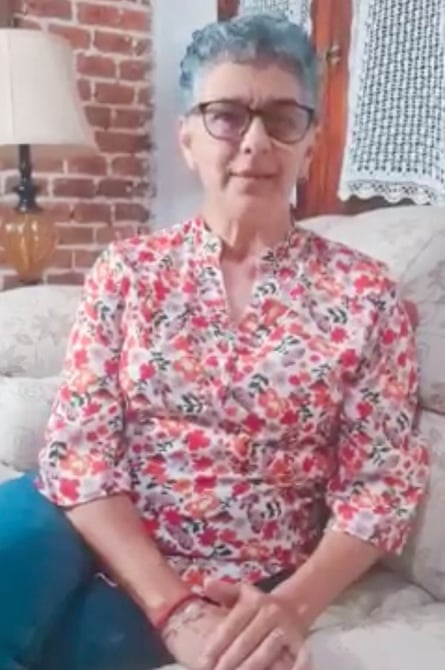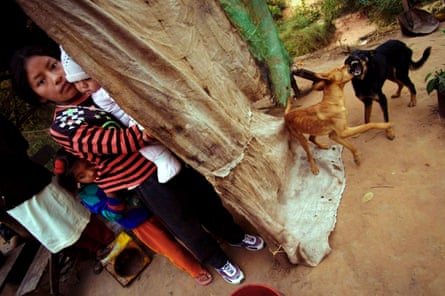[ad_1]
The first time Elvira Idalia Hernández Cuevas heard of Chagas was when her then 18-year-old daughter tested positive.
Hernández’s daughter, Idalia, had donated blood in her home town, near the city of Veracruz in the Gulf of Mexico. When her sample was screened, she was told she was a carrier of the neglected tropical disease.
“I had never heard of Chagas so I started to research it on the internet,” remembers Hernández. “I was terrified when I saw it described as a silent killer. I didn’t know what to do or where to go.”

Idalia is one of the estimated 6 to 7 million people around the world who are infected with the parasite, Trypanosoma cruzi, that causes the life-threatening disease. Chagas is most commonly transmitted by contact with the faeces of blood-sucking insects, known as kissing bugs, that are infected with the parasite.
These bugs live in the walls of poorly built homes in rural or suburban areas. The insect bites the skin, then defecates close by. The parasites enter the body when the person instinctively smears the faeces or urine into the bite, the eyes or the mouth.
It can be between 10 and 30 years before people develop symptoms so most are unaware they have Chagas, often called a “silent and silenced disease”. Some will never develop symptoms but up to a third suffer heart damage, which can lead to progressive heart failure or sudden death. Others (up to 10%) may experience abnormal enlargement of the colon or oesophagus.
About 12,000 people die from Chagas every year. It kills more people in Latin America than any other parasitic disease, including malaria.

Chagas was named after Carlos Ribeiro Justiniano Chagas, a Brazilian physician and researcher who discovered the disease in 1909. It is endemic in 21 countries in Latin America, and also present in North America, Europe, Japan and Australia. It is included on the World Health Organization’s list of neglected tropical diseases; the aim is to achieve elimination of Chagas by 2030.
Yet Chagas remains a relatively unknown illness among both healthcare providers and the public. The global case detection rate is low (estimated to be about 10%), posing a substantial barrier to accessing treatment and care and in preventing transmission. Only 30% of people with the disease are diagnosed, with 75 million people at risk around the world.
Hernández and Idalia visited various doctors but none knew much about Chagas, or how to treat it. “I was surprised, scared and sad because I thought my daughter was going to die. Above all, I couldn’t find out any reliable information, and this added to my anxiety.”
It was only because she had a relative working for the health service thatthe family managed to find help and treatment. That was in 2012. Hernández is now president of the International Federation of Chagas patients.

“In Mexico, the authorities say that there aren’t many people affected by Chagas and that it’s under control, but that’s not the situation,” says Hernández. “Medical professionals don’t receive any training and mistake Chagas for other heart diseases. The majority don’t realise there is Chagas in Mexico.”
The same is true in other countries, she adds.
Colin Forsyth, a research manager at the Drugs for Neglected Diseases Initiative (DNDi), says Chagas is neglected partly because “it’s a silent disease that stays hidden for so long in your body … because of the asymptomatic nature of the initial part of the infection”.
It is also a disease that affects poor populations in rural areas. “The people affected just don’t have the power to influence healthcare policy,” he says. “There’s this confluence of biological and social issues that keep it hidden.”
However, the movement of people from rural to urban areas – and to other continents – has increased the visibility of this disease, which can also be transmitted via blood transfusion, from mother to baby during pregnancy or childbirth, and through organ transplantats.
Emilia Rodríguez, 42, grew up in a small town in Bolivia. She remembers the kissing bugs that came out at night and stories of people suddenly dropping dead while working or playing football.
She moved to Barcelona in Spain 27 years ago. It was only when she was pregnant with her first child eight years ago that she took tests and found she was a carrier of Chagas. “I was paralysed with shock and remembered all those stories my relatives told me about people suddenly dying,” she says. “I thought, ‘What’s going to happen to my baby?’”
Her daughter was tested for Chagas when she was two days old and 10 months. The results were negative. Meanwhile, Rodríguez embarked on a treatment regime.

Photograph: Christian Lombardi/Alamy
Chagas can be treated with two medicines, benznidazole and nifurtimox, both developed more than 50 years ago. They are more effective if given soon after infection. They can cure a baby. For adults, there is no guarantee but the medications can at least prevent or curb disease progression.
In adults, the treatment, taken over two months, can produce severe side-effects. Rodríguez remembers coming out in hives, and feeling dizzy and nauseous. She managed to complete her treatment – not everyone does – and now goes for annual check-ups.
Professor David Moore, a consultant at the Hospital for Tropical Diseases in London, says of the drugs: “They’re practically alchemy – they’re toxic, unpleasant, not particularly effective.”
There’s a desperate need for new drugs, he adds, but pharmaceutical companies won’t develop any because there’s no financially appealing market.
Moore established the Chagas hub – a group of clinicians, scientists and people from the Latin American community – and runs the only Chagas clinic in the UK. “Our primary aim is to get more people tested and treated, and to manage the risk of transmission, which in the UK is from mother to child,” he says.
“Our main problem is that this isn’t a population that people are interested in. It’s a neglected tropical disease, even in places where it’s common.”
The hub runs testing sessions. In the first six months, they tested 150 people and diagnosed 45 with Chagas, compared to about 40 diagnoses between 2000 and 2014. Now they’re trying to encourage midwives in antenatal clinics to screen Latin American patients.
Progress is “glacial”, he says, and has been impeded by Covid. He thinks the WHO target for elimination by 2030 is “a huge challenge”. “I can’t imagine that we’ll be remotely close by 2030. That seems highly unlikely.”

Vector control, involving insecticide spraying and better housing, as well as screening of blood donations and those of childbearing age, remain the most effective control tools. But, as Moore says, more research and more data is needed. Currently, it is difficult to ascertain the number of new infections, particularly among children.
In the meantime, Hernández in Mexico, and Rodríguez in Spain are passionate about spreading awareness of Chagas. Rodríguez was part of a campaign by the Barcelona Institute for Global Health to break the stigma. “I’m fed up with so much silence,” she says. “I want people to talk about Chagas, and to know about it. I want people to get tested and to get treatment.”
[ad_2]
Source link
